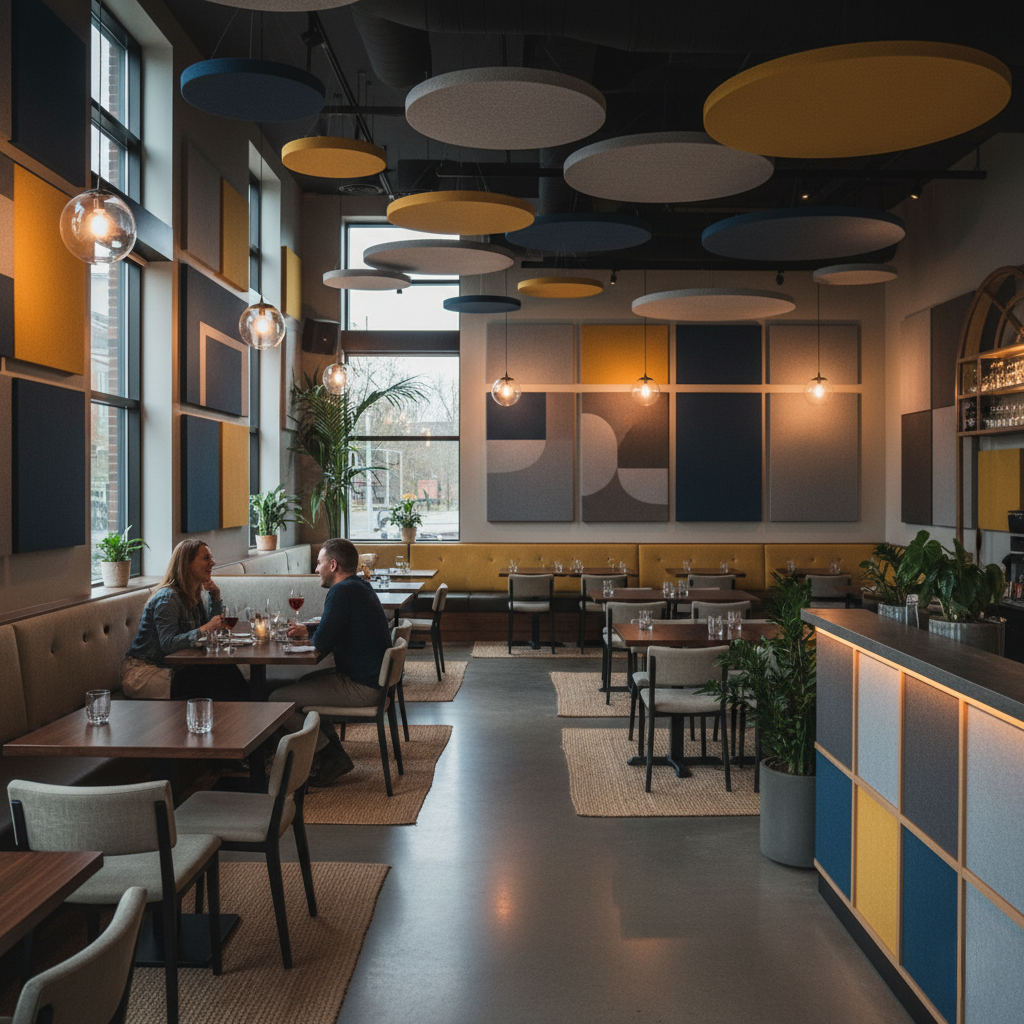In restaurants, ambient noise directly affects the guest experience. Excessive reverberation leads to fatigue, unclear conversations and a perception of poor service. Achieving good acoustic comfort is essential to creating a pleasant atmosphere.
Main causes
Hard surfaces such as tiles, glass and wood reflect sound waves. When multiple conversations overlap, the sound level rises quickly – a phenomenon known as reverberation. The longer it lasts, the noisier the room becomes.
How to improve acoustics
- Treat large reflective areas: walls, ceilings, service zones.
- Add absorbent materials: panels, wall art, acoustic textiles.
- Review the layout: avoid parallel hard surfaces.
- Measure and fine-tune: using the Tester / Acoustic tool.
Recommended acoustic level
An average reverberation time of around 0.55 seconds is ideal for restaurants, balancing clarity with a lively atmosphere.
Design and comfort combined
Contemporary acoustic treatments blend seamlessly with interior design: decorative wall panels, fabric surfaces or ceiling baffles. See inspiring examples on Inspiration.
